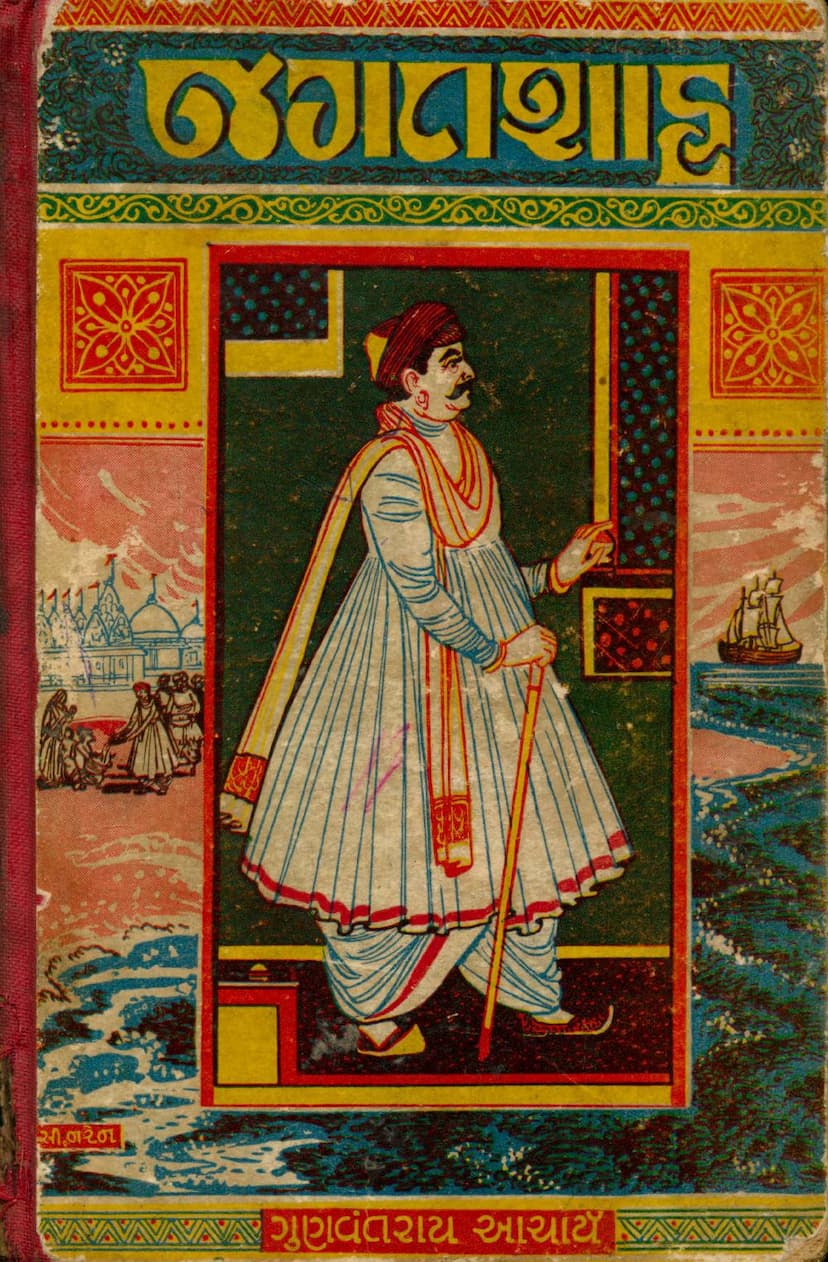Jagatshah
Added to library: September 1, 2025

Summary
Here's a comprehensive summary of the Jain text "Jagatshah" by Gunvantrai Acharya, based on the provided pages:
Book Title: Jagatshah Author: Gunvantrai Acharya Publisher: Jivanmani Sadvachanmala Trust Catalog Link: https://jainqq.org/explore/022900/1
Overall Theme: "Jagatshah" is a historical novel that delves into the life and legend of Jagdu Shah, a prominent Jain merchant and philanthropist who lived during the 13th and 14th centuries of the Vikram era. The book highlights his significant role in overcoming a severe famine and his enduring legacy in Jain tradition, particularly the concept of the "Panderni Pal" (the 15th year's protection against famine). The narrative blends historical accounts with folklore and religious beliefs, painting a vivid picture of the socio-economic and political landscape of Gujarat during that period.
Key Aspects and Narrative Flow:
-
Introduction of Jagdu Shah: The book positions Jagdu Shah as a pivotal historical figure, not a king or a military leader, but an individual whose name shone brightly in history, legends, and religious narratives. His fame is attributed to his immense contribution during a devastating three-year famine that ravaged Gujarat. He earned the title "Daneshwari" (generous giver) and "Jagatseth-Jagatshah" (merchant of the world/king of the world).
-
The Legend of "Panderni Pal": A central aspect of Jagdu Shah's legend is his purported act of building the "Panderni Pal." This refers to a belief that he ensured that no famine would occur in the 15th year of any Vikram era. This demonstrates the deep faith and reverence people held for his actions, attributing to him the power to influence even the forces of nature like rain and drought.
-
Historical Context of Gujarat: The initial chapters provide a detailed historical backdrop of Gujarat during the 13th and 14th centuries. It describes a period of intense political turmoil, marked by invasions and conflicts involving the Delhi Sultans (like Qutb-ud-din), the Gurjara kings, and rulers from Devgiri. Gujarat experienced destruction, loot, and constant warfare, which contributed to widespread suffering and economic hardship. This turbulent environment sets the stage for Jagdu Shah's heroic interventions.
-
Jagdu Shah's Business Acumen and Philanthropy: While historical records are sparse, the novel suggests Jagdu Shah was a daring merchant who made fortunes through his trade. Crucially, he used his wealth for immense philanthropic purposes, notably in rebuilding and developing the beautiful city of Bhadreshwar, which became a significant Jain center.
-
Divergent Accounts: The text acknowledges that while Jain literature primarily focuses on his role in the famine and his building activities, Brahmanical literature offers a different narrative. This alternative account mentions his involvement with the Hinglaj Mata temple, suggesting a legend where he sacrificed his own relatives to appease the goddess, who is then revered as Harshida.
-
The Author's Journey and Inspiration: The author, Gunvantrai Acharya, states that the inspiration for this narrative arose from his visit to Kutch and Bhadreshwar. Exploring the beautiful Jain temple and its ruins sparked the idea to tell Jagdu Shah's story.
-
Detailed Historical Account of the Famine: A significant portion of the text is dedicated to describing the severity of the famine. It portrays the economic and social devastation, the plight of the people, and the desperate measures taken. Jagdu Shah's intervention is presented as a turning point, where his foresight, resourcefulness, and generosity saved the populace from utter ruin.
-
Focus on Social and Political Environment: The novel vividly portrays the fragmented political state of Gujarat, where internal conflicts and external invasions created a chaotic environment. It highlights the role of various dynasties and chieftains, and how this instability exacerbated the suffering of the common people.
-
Character of Jagdu Shah: Jagdu Shah is depicted as a man of immense foresight, courage, and deep religious conviction. He is shown as someone who understood the needs of his people and acted decisively during crises. His actions reflect a commitment to Jain principles of ahimsa (non-violence) and dana (charity).
-
The Narrative Structure and Chapters: The "Anukram" (index) reveals the story is divided into numerous chapters, suggesting a detailed account of Jagdu Shah's life. Titles like "Kanthkotne Sandhpati" (The Chief of Kanthkot), "Bhai Bandhi" (Friendship), "Dukhad Akal" (Terrible Famine), and "Panderi Paal" indicate the diverse aspects of his life and the events narrated. The initial chapters focus on the historical and geographical context, while later chapters likely delve into the specific events of his life and the famine.
-
Enduring Legacy: The book emphasizes that even after seven centuries, Jagdu Shah's memory is kept alive through the legend of "Panderni Pal." This highlights his lasting impact on the collective consciousness and religious beliefs of the Jain community.
In essence, "Jagatshah" aims to immortalize the story of a remarkable individual who rose above the adversities of his time through his business acumen, compassionate heart, and deep spiritual faith. It serves as a testament to the Jain ideals of generosity, resilience, and the profound impact one person can have on society, even in the face of overwhelming natural and political challenges.